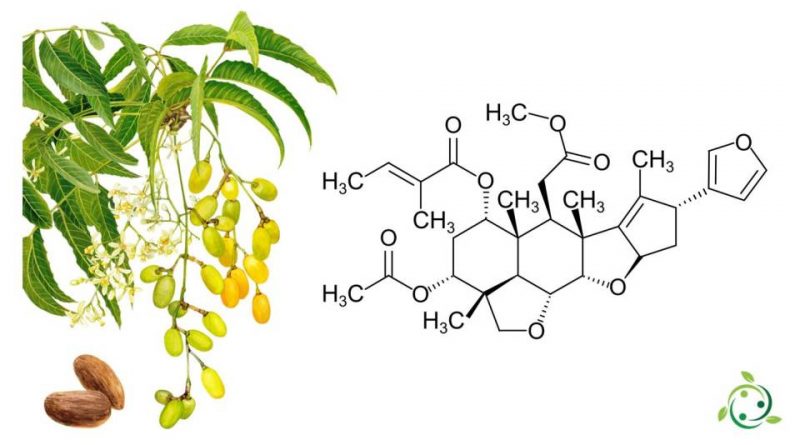Salannin
Salannin
Salannin, whose term in the official IUPAC nomenclature is: [(1R, 2S, 4R, 6R, 9R, 10R, 11R, 12S, 14R, 15R, 18R) -14-acetyloxy-6- (furan-3-yl) -10- (2-methoxy-2-oxoethyl) -7,9,11,15-tetramethyl-3,17-dioxapentacyclo [9.6.1.02,9.04,8.015,18] octadec-7-en-12-yl] ( E) -2-methylbut-2-enoate, is a secondary plant substance of the limonoid group with molecular formula: C34H44O9.
Salannin is a pentacyclic compound which, unlike other limonoids, is not a lactone.
From a chemical point of view it is an acetate ester, a member of furans, organic and a methyl ester that derives from tiglic acid.
Salannin occurs naturally mainly in citrus fruits, in the seeds and leaves of a tropical plant (Melia volkensii Gürke) and in the neem tree (Azadirachta indica A. Juss., 1830).
It has also been ascertained that the Azadirachta indicates var. siamensis, found only in Thailand, contains significantly less salannin than Indian.
Salannin has an insecticidal activity and has a role as a regulator of the growth of insects, and is in general a natural substance present in some plants that plays a negative and repulsive role on insects or other phytophagous animals.
Warning: The information shown is not medical advice and may not be accurate. The contents are for illustrative purposes only and do not replace medical advice.

